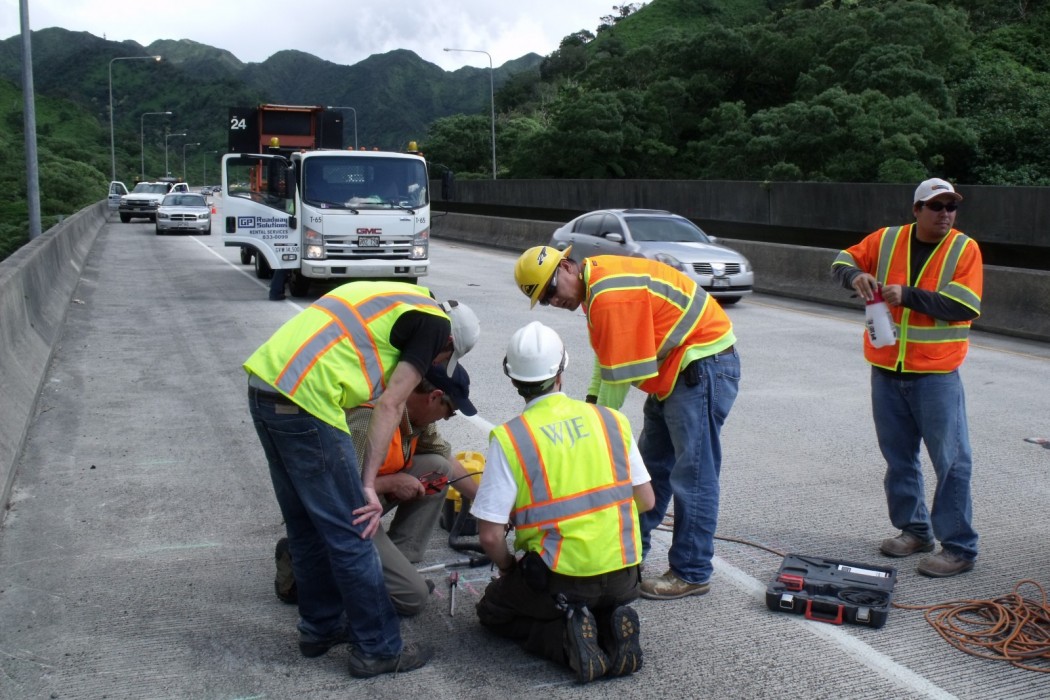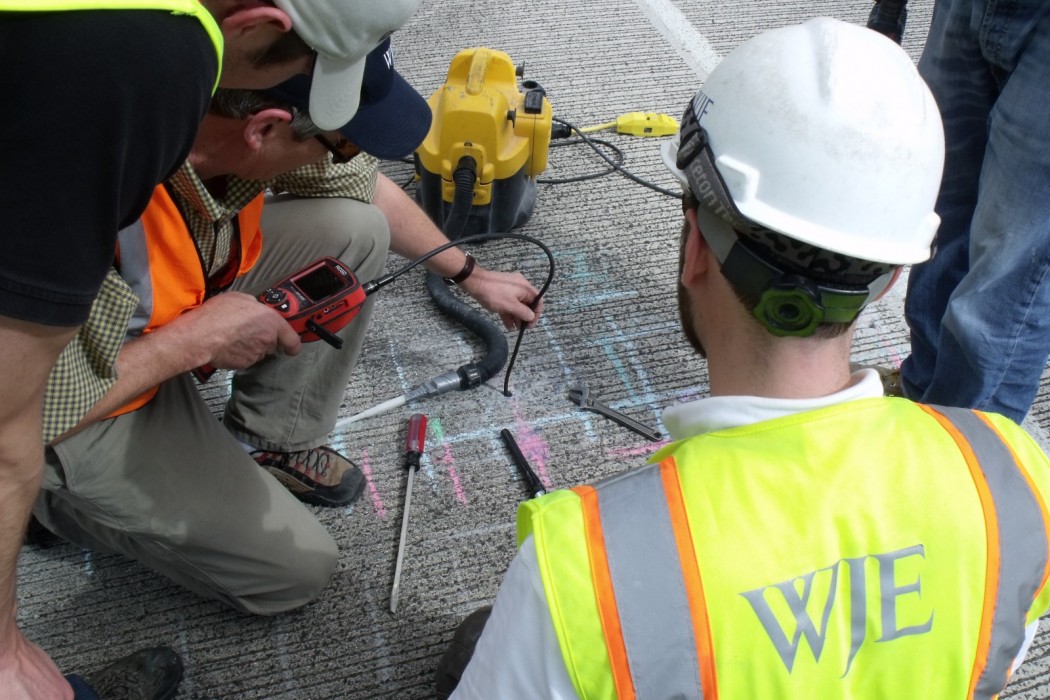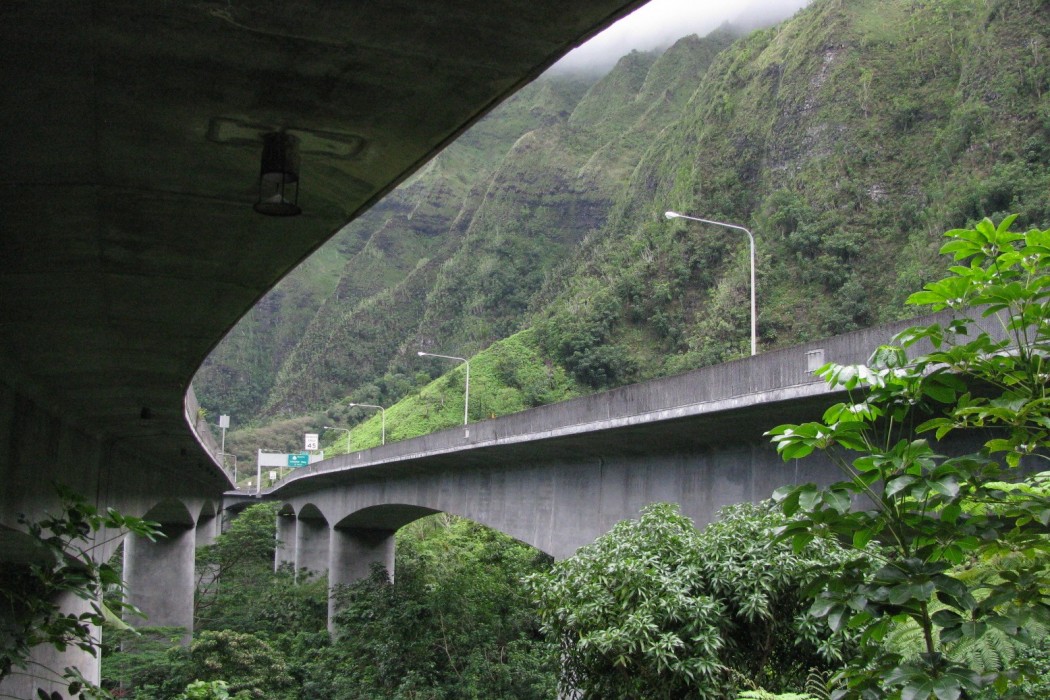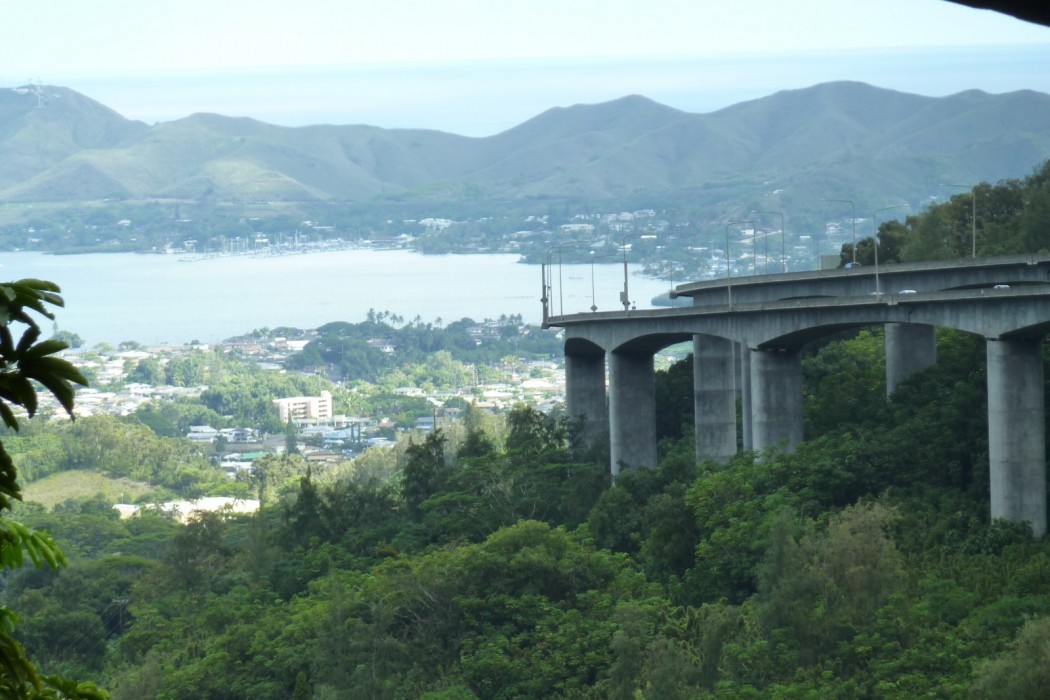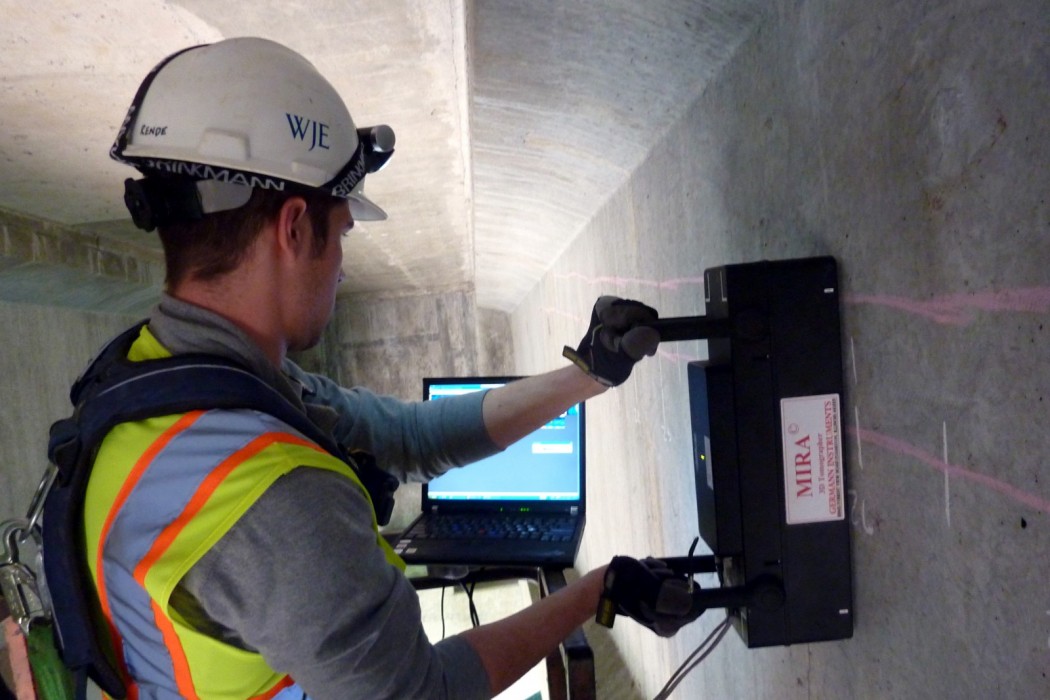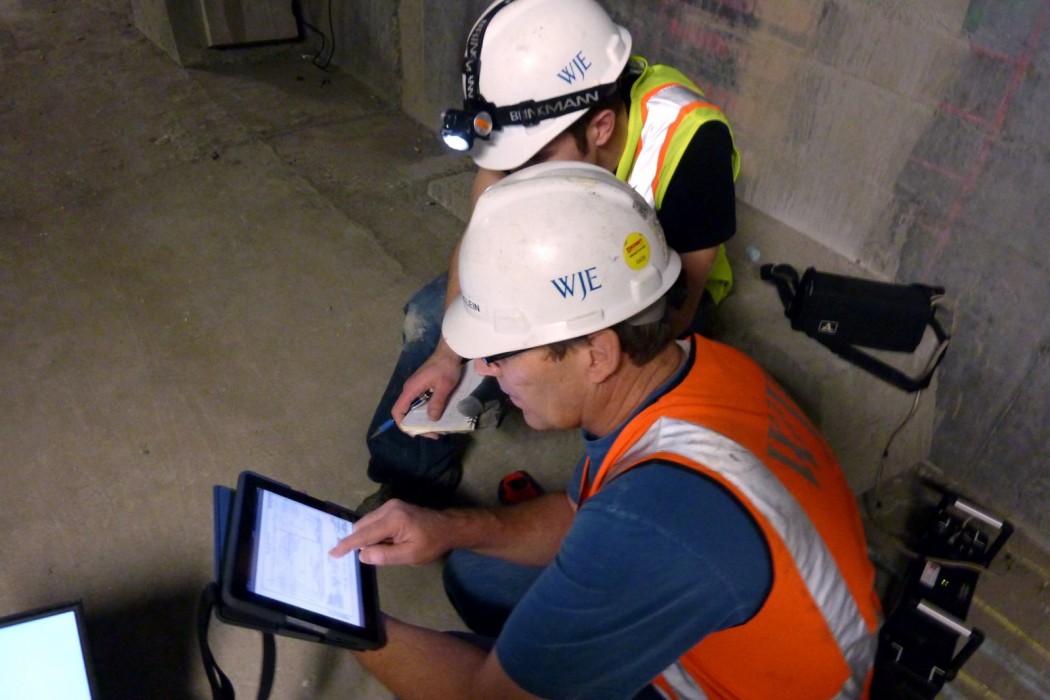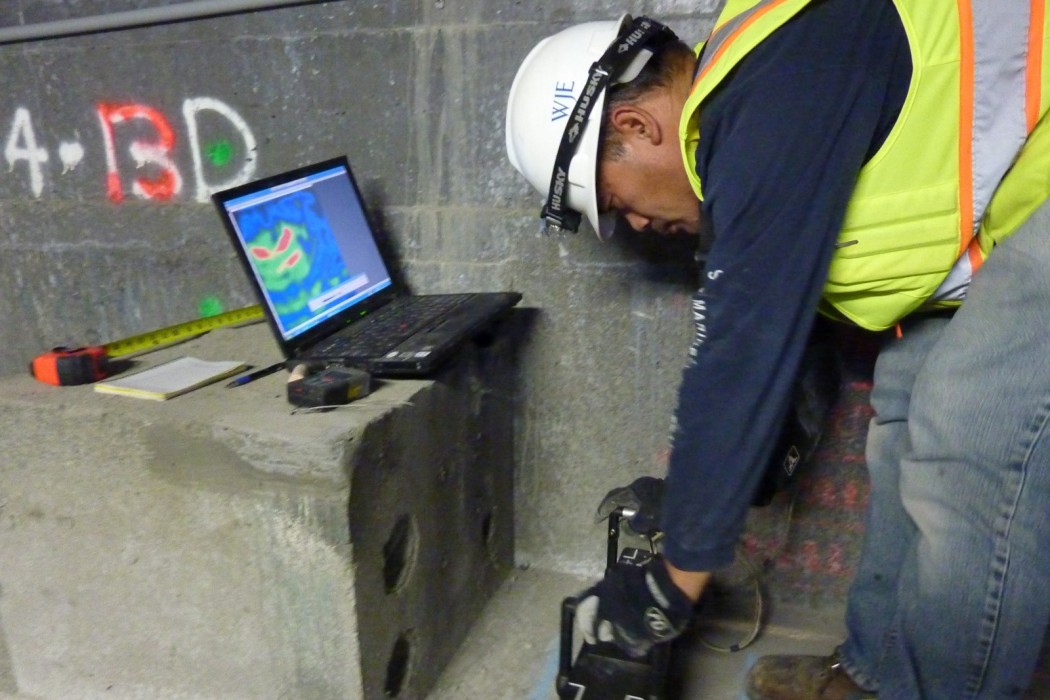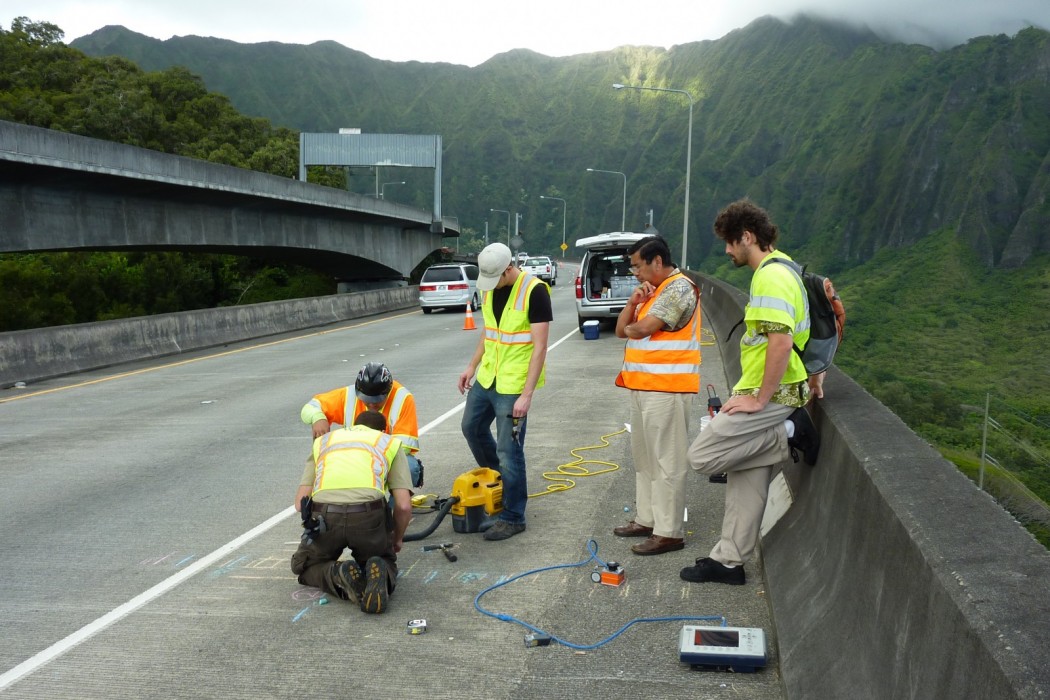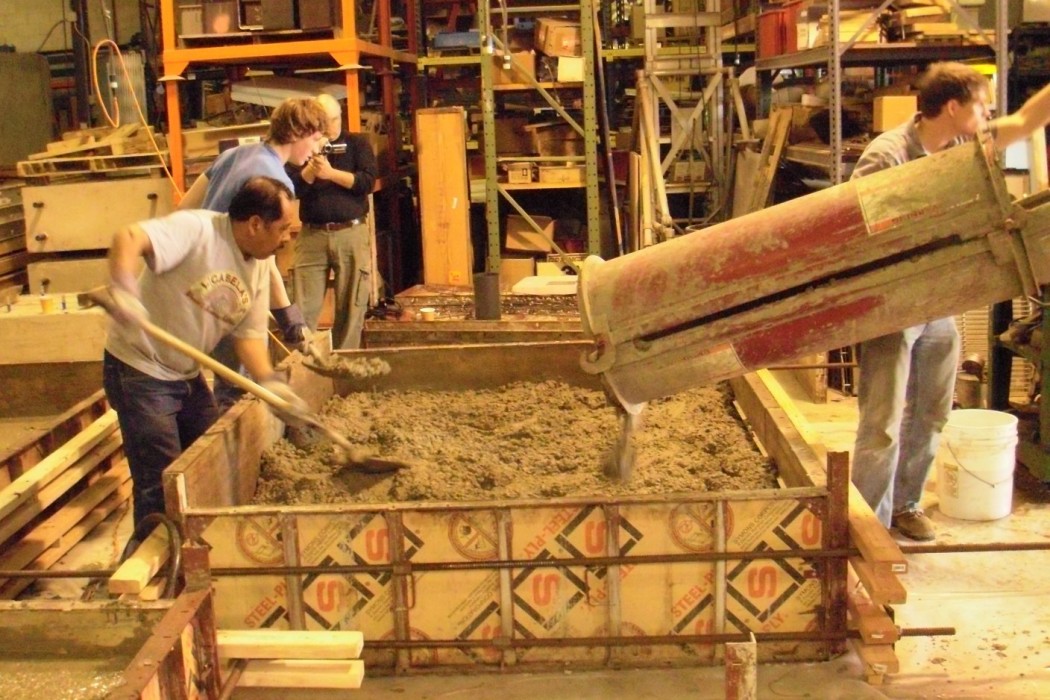WJE PROJECTS
Oahu Bridges
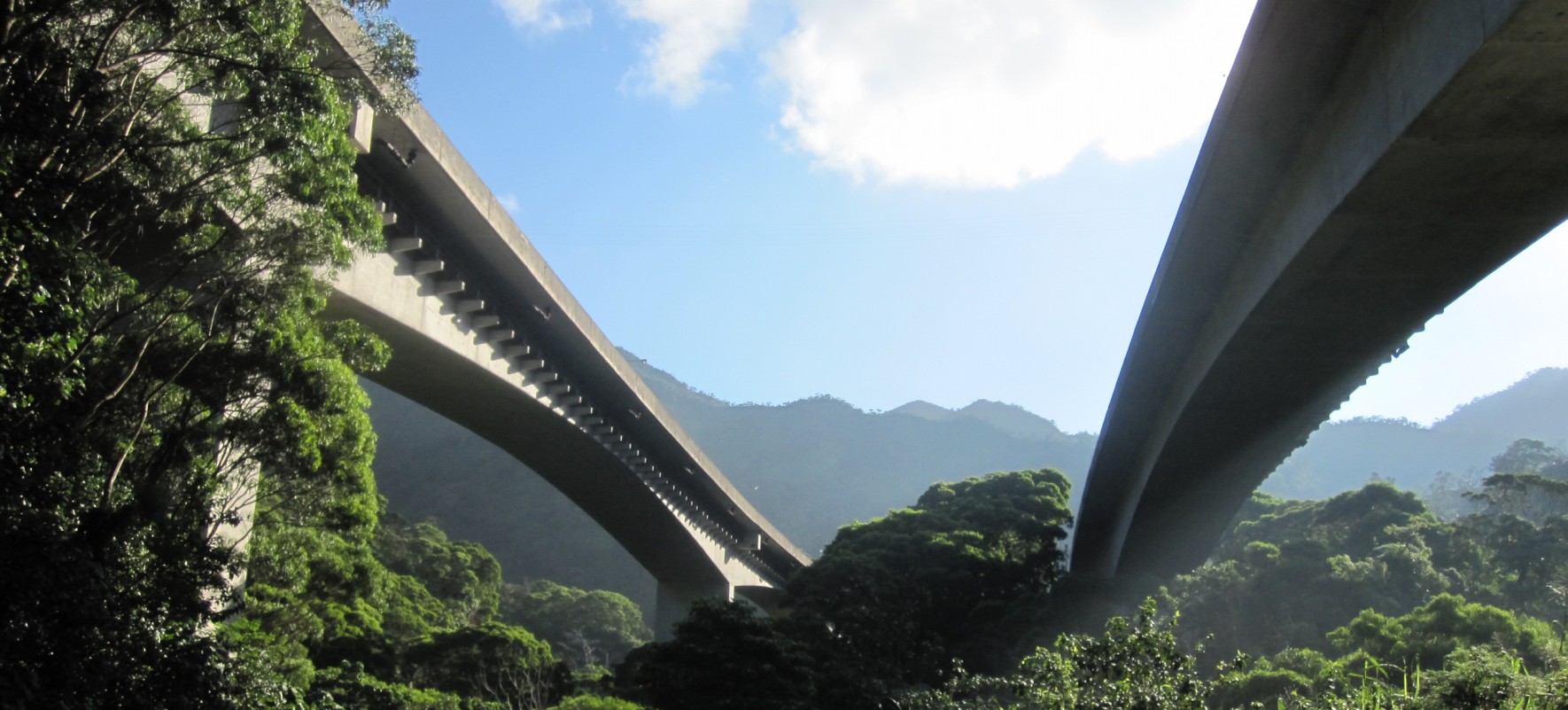

CLIENT |
State of Hawaii |
LOCATION |
Oahu, HI |
Post-tensioning Inspection and Appraisal
Post-tensioning tendon corrosion—a result of voiding in grouted tendon ducts—was discovered in several bridges with similar construction and climate conditions as those in Hawaii. Consequently, the Hawaii Department of Transportation sought an expert to inspect and appraise the condition of four bridges on the H-3 Freeway.
BACKGROUND
Interstate H-3 runs east to west across the island of Oahu, meandering through the lush windward mountains between Honolulu and the Kaneohe Marine Corps Base. The 15-mile scenic interstate highway includes four multispan bridges with a combined length of over 3 miles, containing 2 million feet of post-tensioning, draped profile tendons.
SOLUTION
In preparation for a full-scale inspection of the bridges, WJE engineers completed a thorough document review, surveyed the bridges with ground penetrating radar to identify tendon ducts susceptible to voiding, and engaged in field reconnaissance to determine their accessibility. From the data collected, WJE technicians replicated voids found in the bridges using specially constructed laboratory test blocks to validate the effectiveness of the MIRA tomography equipment—a nondestructive method of detecting voids—prior to its full-scale implementation.
Once confident in the system's performance, WJE engineers used MIRA to scan a combined 319 feet of the bridges over a two-week period. Where voids were detected, discreet holes were drilled, allowing the engineers to perform borescope inspections of the offending tendon ducts. The engineers also excavated five inspection openings to verify MIRA results and collect grout samples for further laboratory studies. Despite the identification of eight grout voids, no tendon corrosion was observed.
Advanced laboratory testing of the detection equipment and inspection methods elevated the client's level of confidence, while WJE's expertise in materials science and efficient use of nondestructive testing methods allowed for prompt, successful bridge investigations with minimal interruption to the public.
RELATED INFORMATION
-
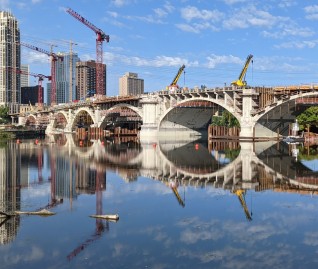 Our knowledge of bridge performance is supported by technical expertise in structural... MORE >Services | Bridge Engineering
Our knowledge of bridge performance is supported by technical expertise in structural... MORE >Services | Bridge Engineering -
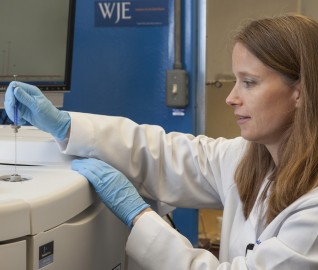 Our materials scientists provide comprehensive consulting services for the evaluation and... MORE >Services | Materials Evaluation and Testing
Our materials scientists provide comprehensive consulting services for the evaluation and... MORE >Services | Materials Evaluation and Testing -
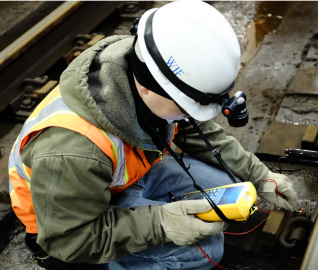 We have pioneered the use of nondestructive evaluation methods—such as ground penetrating... MORE >Services | Nondestructive Evaluation
We have pioneered the use of nondestructive evaluation methods—such as ground penetrating... MORE >Services | Nondestructive Evaluation































